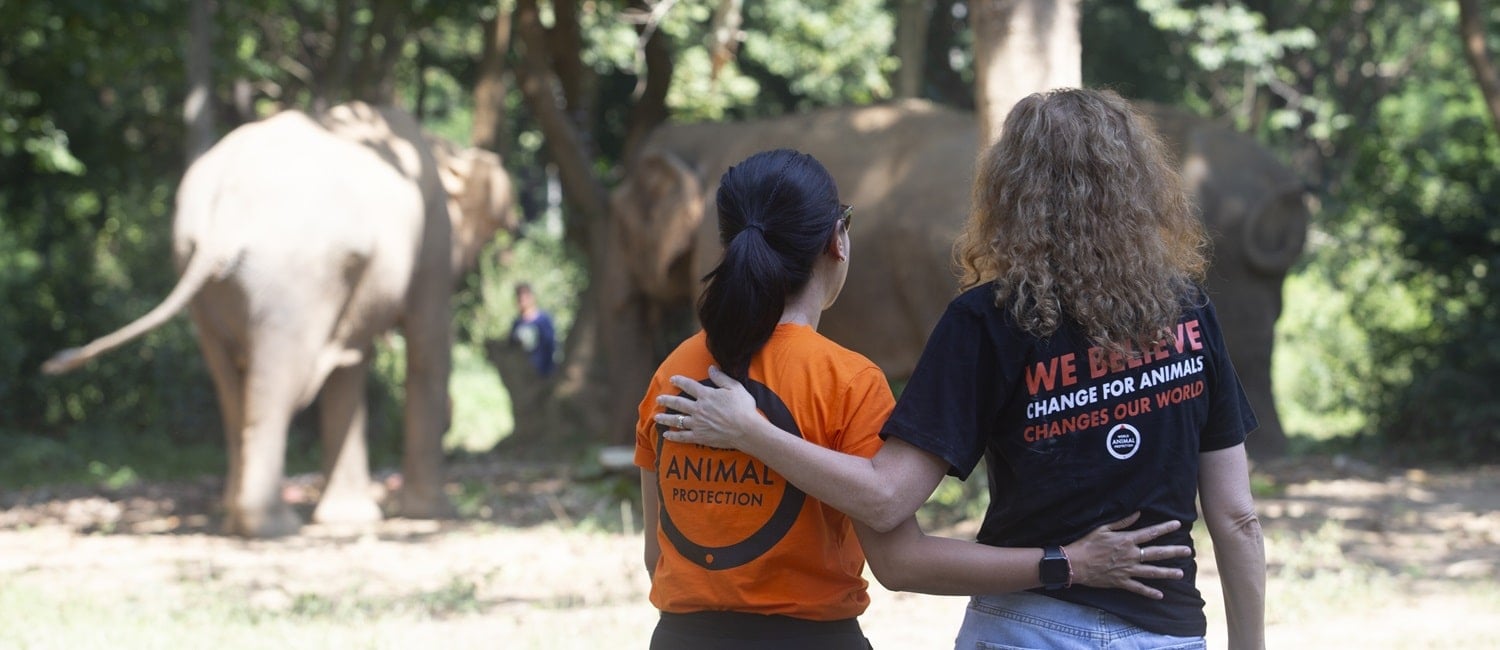
Dreamworld tiger incident sparks wildlife entertainment safety concerns
News
Research shows there is no way tigers can thrive in theme parks, where they're made to perform for visitors. We take a look at why the tourism industry needs to move away from close encounters with wildlife to ensure the safety of animals and humans.
Image: Tiger being fed at Dreamworld. Credit: Carol Slater
In early September 2024, an incident between a tiger and trainer at Dreamworld made global headlines, while just weeks later a keeper was killed while interacting with an elephant at Bali Safari & Marine Park. But serious injury in the wildlife tourism industry is nothing new, and this latest incident reinforces why we need to end close encounters with wild animals - for the safety of both animals AND humans.
Tigers do not belong in captivity
Venues in Australia, like Dreamworld, as well as in popular Australian tourist locations like Bali and Thailand offer circus-style shows and direct experiences with tigers and lions.
At Shoalhaven Zoo in 2020, a handler was rushed to hospital after an incident with one of their lions. In the same year, a staff member of Elephant Kingdom Park in Pattaya, Thailand, was seriously injured after an incident while feeding three tigers.
These larger-than-life animals are mostly solitary aside from the relationship between a mother and her cubs. An individual will keep a large territory to themselves, which would typically cover between 8km to 95km.
Whether it is watching tigers perform in shows or riding elephants - animals in this industry often suffer physically and psychologically from not being able to move and behave as they would naturally in the wild.

Avoid wildlife encounters while on holiday
But it’s not just trainers at risk, and it’s not just tigers. There has been a string of similar serious incidents as a result of visitors interacting with wild animals, like elephants, in captivity.
A wild elephant would never let a human ride on its back, allow a human to bathe them, or submit to performing unnatural behaviours in shows. The process of people gaining control over the elephant starts early on in their life in captivity. It is often referred to as ‘breaking-in’, or ‘the crush’. All wild caught and captive bred elephants abused for entertainment undergo this cruel training in their early years.
These interactions can have dire results for those involved. In Phuket, Thailand, an Australian man was in critical condition after being charged at by an elephant, and in a separate incident in Bali, a 12-year-old boy was hit in the face by an elephant, fracturing his skull. In both instances the families of those hurt issued statements warning tourists about interacting with wild animals.

How you can be an Animal Friendly Traveller
To avoid financing the suffering of wild animals, and the risks of close interactions with wild animals helh as Dreamworld) that houses wildlife, and to make sure that any wildlife venue you visit is a genuine sanctuary.

For example, it is not a high-welfare venue if it allows direct contact with its animals. And if you can hug, hold, or take a selfie with a wild animal, you can be sure that extreme cruelty is involved.
You can help put an end to this cruel industry by avoiding wildlife experiences that allow direct human-animal interaction, and instead choose wildlife friendly tourism. You can become an Animal Friendly Traveller today.
Be an animal friendly traveller
Right now, captive wild animals are being exploited for profit and entertainment. Will you be an Animal Friendly Traveller?
Animals, not entertainers.
Animals are sentient beings who can feel complex emotions like happiness, fear, and pain, to name a few. Like us, they too deserve to be happy and free in their homes – the wild.

